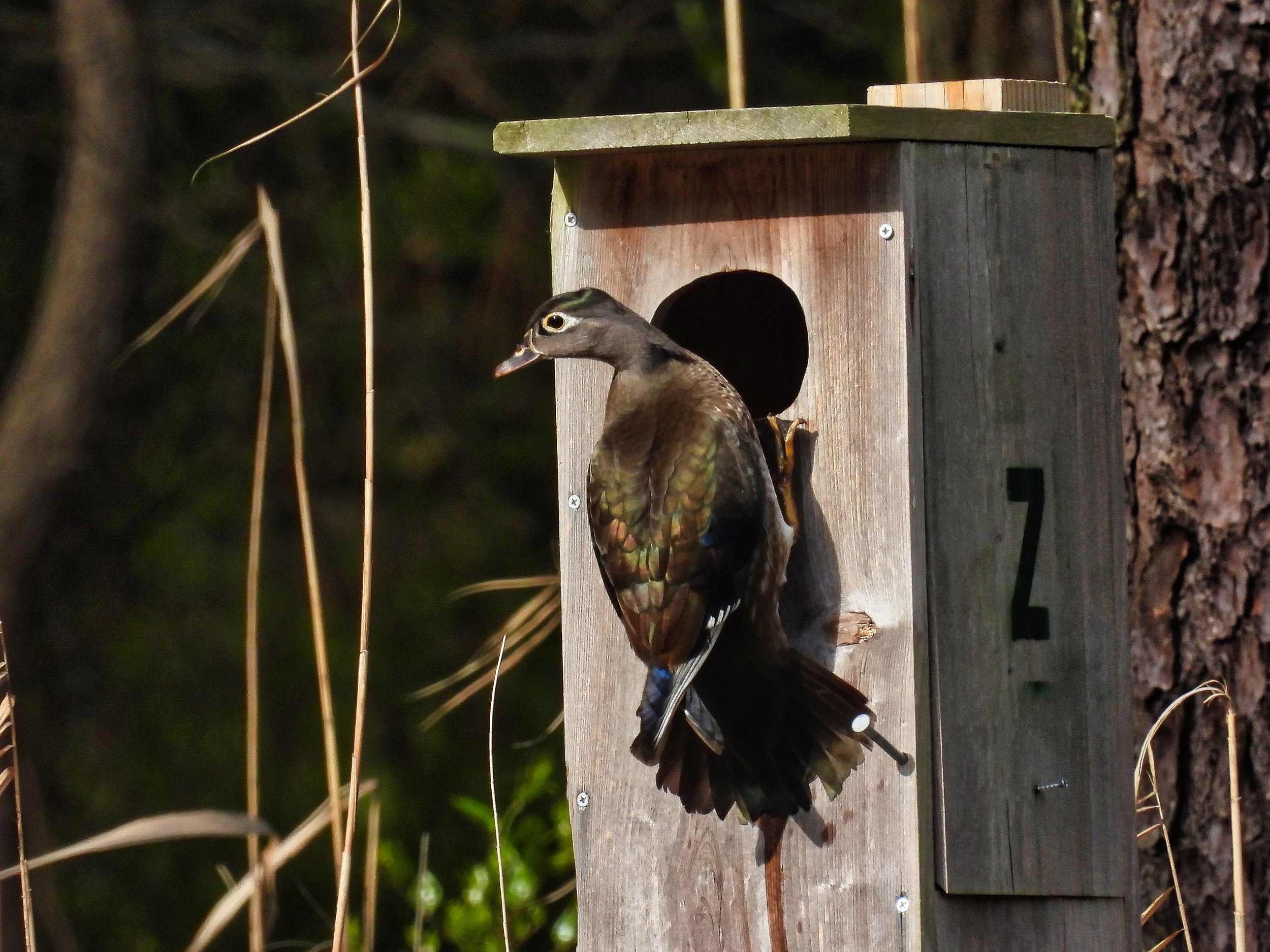Spring/Summer 2022
Time to set the 4:00am alarm - I’m going to try again.
The Wood Duck & Nest Box Monitoring
The Chesapeake Bay Environmental Center (CBEC) has twenty-eight wood duck nest boxes on the property. CBEC volunteer teams monitor these boxes on a weekly basis during the nesting season and record the data. Being on a nest box monitoring team I decided to try to capture in pictures the ducklings as they perform their famous jump from the nest. Capturing this is not easy because you don’t know exactly what day it will happen. On the day it will most likely happen soon after sunrise, so you must be there before sunrise. A little more about the wood duck:
Wood ducks are cavity nesters (holes in trees). They do not build the cavity. These natural cavities can be between 2-60 feet from the ground, averaging 25 feet. The nest site will be on or near water, but could be more than a mile from water. They will also use nest boxes, but these boxes must be of specific dimensions, especially the hole.
Wood ducks form a seasonal bond, meaning they pair up for that season only. The next season they will have a different mate.
The female selects the nest. The female will inspect the cavity while the male stays outside the cavity.
The clutch size is 6-16 eggs. They will have 1 or 2 broods per season.
Incubation starts 3-4 days before the clutch is completed. Before that time the female will leave the nest with the male. After incubation begins the male leaves the nest area and the female will remain on the eggs, only leaving (usually around sunrise) for a short period to eat and defecate. Incubation period is typically 25-37 days, averaging 30 days. This could be much longer, as I learned last year.
Egg-dumping - Female wood ducks will sometimes lay their eggs in another female’s nest to be raised by that female.
The eggs will all hatch over a period of a few hours. At approximately 24 hours old the ducklings will exit the nest. The hen will call them. They will jump (they are unable to fly at this young age), one after the other, out of the nest cavity. Remember, the nest can be high off the ground - they toss themselves out and onto the ground or into the water. This is what I want to capture in pictures.
May I suggest you begin at the First Morning.

